Our relationship with mold is a complex one. On one hand, mold has given us penicillin and it plays a vital role in the ecosystem. On the other, it is often an intruder in our homes, triggering runny noses, coughing, rashes, headaches, and even causing asthmatic symptoms in some people.
If you do find mold in your home, can you clean it up without calling in the professionals? Well, by arming yourself with a few key products, understanding what type of mold you’re dealing with, and knowing exactly where this unwelcome infestation lives, it can be very simple to rid your home of mold.
We’ve put together a four-step do-it-yourself guide to cleaning up mold, including information on the precautions you need to take, the products you need to use, and when you might need to call in the professionals.
4 step guide getting rid of mold yourself
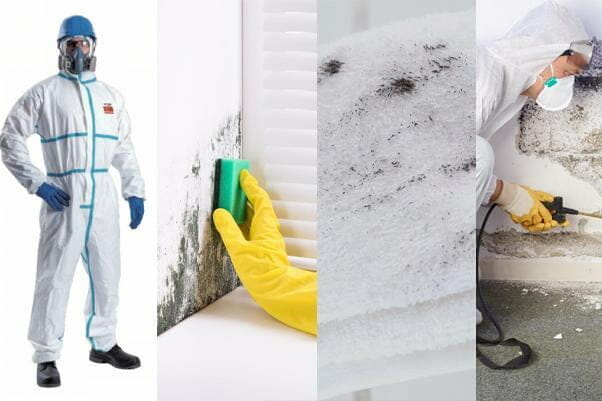
STEP 1: Wear proper protective equipment
As you will be using various chemicals and household cleaners during the mold removal process, it is important that you wear the proper protective equipment.
As well as protecting you against harsh cleaning products, your protective equipment will also prevent ill consequences that might result from inhaling or brushing up against any mold spores during the mold removal process.
At a minimum, your protective equipment should include:
- Rubber gloves
- Sturdy shoes (preferably
- rubber)
- Face mask
- Eye protection
As the area you will be cleaning is relatively small – less than the mandated 3 feet by 3 feet – and you will not be using any overly harsh or powerful products, any additional personal protective equipment is optional.
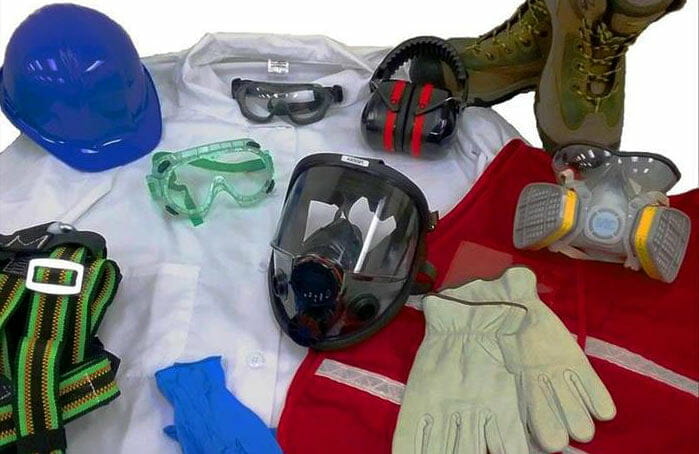
STEP 2: Dry the moldy area
Mold thrives in damp and moist conditions. If an area of your home or an item of clothing or furniture has become moldy, it is likely due to a dampness issue.
If you do not ensure that the moldy area is completely dry before you begin removing the mold, the mold may grow back.
If you are attempting to clean an item of furniture or clothing, move it outside into the sun until it is completely dry.
If the mold issue is in an area of your home, ensure that there are no leaks or other faults that may be causing the dampness and mold growth. If the dampness is the result of a flood or spill, keep the area well ventilated or try and dry it with a fan.
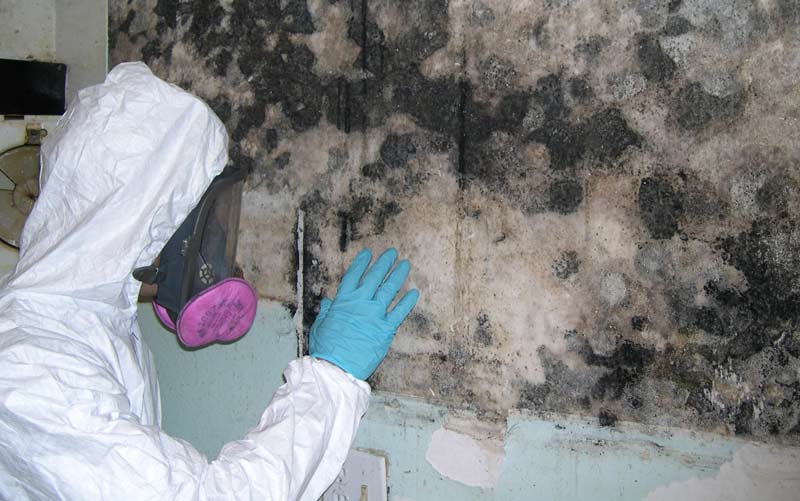
STEP 3: Remove excess mold from fabrics
If you are attempting to remove mold from fabric items such as clothing or furniture, you should brush away as much surface mold as possible. It is preferable if you do this outdoors in order to prevent mold spores from spreading in your home.
Using a stiff brush or dry cloth, remove this surface mold by using firm downward strokes. Brush away from your face in order to avoid inhaling any mold spores.
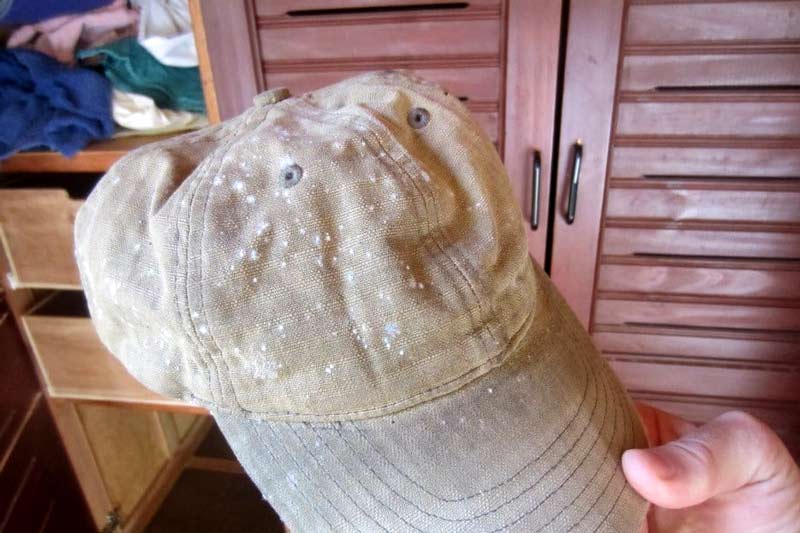
STEP 4: Remove the mold
Depending on the area or object that you are trying to clean, you will need to prepare different cleaning solutions and use different methods to remove mold.
It should be noted that you must be cautious when using bleach due to its toxic fumes, and that bleach should never be combined with ammonia.
- For machine washable clothing, wash the item with disinfectant on the hottest temperature cycle allowed by the item’s care instructions. If any mold stains remain, soak in a mixture of oxygen bleach and water.
- For furniture and leather items, wipe down the moldy area with distilled white vinegar, followed by warm water and detergent or leather soap. Allow to completely air dry.
- For tiled areas and bathrooms, mix a solution of one cup bleach to one gallon of water. Wipe down the moldy area and allow the bleach solution to soak for at least 15 minutes. Retreat the area as necessary, or wipe down with warm water and allow to air dry.
- For interior walls and hard flooring, mix 1 part dishwashing detergent with 10 parts bleach and 20 parts water. Apply the solution to the moldy area with a sponge or mop, and allow to dry. Do not rinse off the solution with water.
Is it better to use a professional?
For certain items or areas in your home, such as moldy carpets or moldy clothes that are dry clean only, you will need to use a professional.
The removal of moldy carpets requires the use of specialized equipment, including respirators and wet-dry vacuums. It is also a laborious task, involving the cutting, removal, and proper disposal of carpet and underlay.
Dry clean only clothing items are best to be cleaned by a professional dry cleaner. They will have the appropriate products and know the best methods to remove mold from your delicate clothes.
Besides specialized items and areas such as these, it is usually safe to remove mold yourself, providing the moldy area is relatively small.
Is removing mold dangerous?
It is not usually dangerous to remove mold from your home, although this depends on the type of the mold and size of the growth you are dealing with.
If you have a large mold growth, measuring more than 3 feet by 3 feet, then the length of time required to remove this growth will mean prolonged exposure to cleaning products and chemicals. This is certainly not ideal, and if your mold growth is this large, it is recommended that you call in professionals with proper protective equipment.
Similarly, if you suspect that you have toxic black mold, also known as stachybotrys, in your home, it is best to let the professionals handle the cleanup. Toxic black mold will be greenish-black in appearance, and grows in areas with large amounts of moisture.
Can you remove mold naturally?

While natural products such as vinegar, sunlight, and fresh air certainly have their part to play in removing mold, they should not be solely relied on. They can, however, be employed to prevent the growth of mold and mildew.
Keeping your home and possessions clean, dry and well-ventilated with sunlight and fresh air will help stop the growth of mold in the first place. Vinegar is also a powerful antifungal, shown to be up to 90% effective against mold and 99% effective against bacteria. If you notice a leak or spill, treating the area immediately with a vinegar soaked sponge may stop any mold from taking root.
How do professionals remove mold?
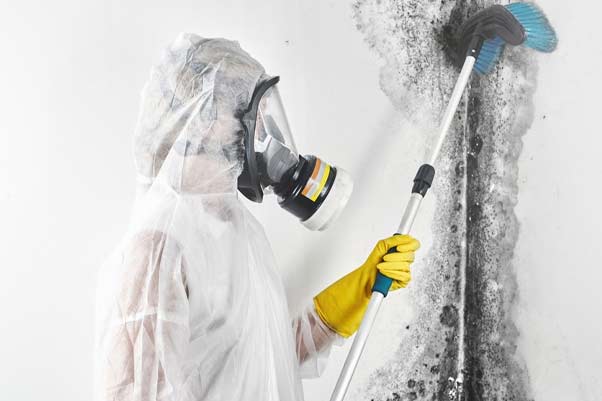
Professional mold remediation sees a mold remediator assess the area or object of concern, and then determine the best methods for cleaning and removing the mold.
Depending on the extent of your mold growth, and the area in which it is growing, this professional remediation may include the thorough drying of the area with a wet-dry vacuum or powerful fan, an extensive damp wipe down, and the use of a HEPA vacuum to remove any remaining fine particles.
It goes without saying that any professional remediator will use extensive personal protective equipment throughout this process. This is not only due to the chemicals used but also to protect against the mold itself, particularly if the area in question is very large.
FAQ’s
Is removing mold from drywall the same process?
Removing mold from drywall requires the addition of detergent to help the bleach mixture adhere. This is because drywall is porous, and mold may be lurking below the surface within the wall itself.
The process for removing mold from drywall is the same as removing it from other interior walls and hard flooring.
Once you have dried the area of drywall, prepare your solution of 1 part dishwashing detergent, 10 parts bleach and 20 parts water. Ensure you are wearing the proper protective equipment to guard against any bleach fumes.
Then apply the bleach and detergent solution to the moldy area. Do not oversaturate the drywall, and do not rinse the solution off. Allow the area to air dry, and keep the room well ventilated.
Will sunlight kill mold?
Sunlight is a powerful ally in the mold removal process. It can not only help prevent the formation of mold in the first place by keeping your home and possessions dry, it can also play a significant role in removing mold from clothing and other fabric items, as seen in Step 2 above.
However, sunlight will not kill mold on its own as the strength of the UV radiation required is simply too great. If you do wish to use UV radiation to kill mold in your home, then there are some ultraviolet germicidal irradiation (UVGI) cleaners that might be able to do the job for you.
Unfortunately, most commercially available home UVGI cleaners will still not be strong enough to kill most molds. If you are able to find a UVGI unit that is strong enough to kill mold, you should also be aware that even dead mold spores can cause an allergic reaction, and you will likely still have to clean and remove the mold yourself.














